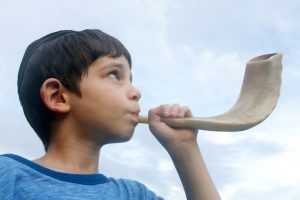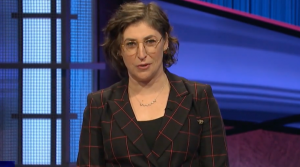This Week’s Jewish Trivia Quiz: Yom Kippur
Published September 13, 2021
A tradition in some ultra-Orthodox communities before Yom Kippur is kaparot, the ceremonial swinging of a chicken over one’s head three times before slaughtering the bird. This act is a symbolic transfer of one’s sins to the animal, which is then donated to the poor. What other ceremony involving an animal is associated with Yom Kippur?
A. In some Sephardic communities, there is a ceremony similar to kaparot. However, the bird that is slaughtered is the stork, which is commonly found in Arab countries of the Middle East. The bird is ritually slaughtered even though it is not a kosher animal, and is then donated to non-Jewish neighbors as the giver recites the command from Leviticus 9:18, “Love your neighbor as yourself.”
B. The prophet Jonah was swallowed by a whale sent by God as he had disobeyed God’s command. In the belly of the fish Jonah repented and was saved. The Book of Jonah is now read every year on Yom Kippur afternoon, reflecting Jonah’s teshuva, or repentance, the primary Yom Kippur theme. Jonah is said to have been buried in Mosul, Iraq. Traditionally, Iraqi Jews have included a fish as part of their break-the-fast meal after Yom Kippur. Baked inside the fish is an apple, which both represents Jonah inside the whale as well as the completion of the Days of Awe, which began with apples dipped in honey.
C. It was traditional in some Jewish communities in Spain and Portugal around the 12th century to not only fast for Yom Kippur, but to ceremonially sell all of their food to a non-Jewish neighbor, similar to the Passover selling of chametz. The custom was elucidated by Maimonides in the Mishne Torah, and included a specific requirement that before selling the food, the Jew must ensure that he had fed all of his animals. The message was that caring for animals was the highest priority, even more important than one’s preparation for the Yom Kippur fast.
D. In Leviticus chapter 16, we read of the bringing of two goats to the High Priest in the Temple on Yom Kippur. One goat was sacrificed to God. The Priest then would lay his hands upon the second goat while confessing the sins of the Jewish community. That goat was then thrown to its death off a hill in the Judean desert, taking the sins of the people with it. This goat became known as the scapegoat.
E. Balaam, known for his blessings and curses, was traveling on behalf of Balak, the leader of the Moabites, to curse the Israelites. As Balaam rode on his mule, an angel sent by God appeared in the road, so the mule stopped. The mule saw the angel though Balaam did not, so he hit the mule, attempting to get her to continue. God enabled the mule to speak, and she criticized Balaam for his harsh treatment. Balaam’s eyes were opened to his bad behavior, and he asked God’s forgiveness. God accepted his teshuva, and Balaam continued on his journey, but only to bring God’s blessings to the Israelites, not the curses intended by Balak. On Yom Kippur in 1853, Russian Rabbi Smirnoff ben Stolichnaya created a drink in recognition of Balaam’s repentance, which he dubbed the Moscow Mule, and Russian Jews to this day break their Yom Kippur fast by drinking this concoction in copper cups.
















